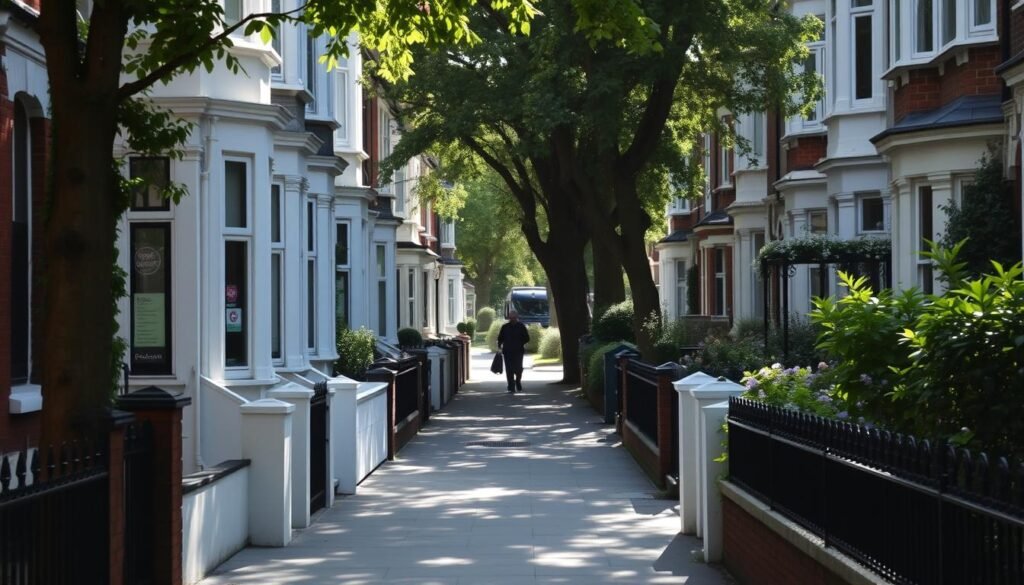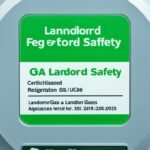Key Takeaways
- Smoking in rental properties poses health risks and property damage concerns
- Landlords have the right to implement smoke-free policies
- Clear communication and proper documentation are crucial for enforcing smoking rules
- Consider offering smoking cessation resources to support tenants
- Regular inspections and maintenance can help detect and address smoking-related issues
- Be aware of legal considerations surrounding smoking policies in rental properties
Introduction
Did you know that secondhand smoke can linger in a property for months after a smoker moves out? As a landlord in the UK, dealing with tenant smoking in your rental property can be a challenging issue. It’s not just about the smell; it’s about protecting your investment, ensuring the health and safety of all tenants, and maintaining a desirable living environment. This comprehensive guide will walk you through the ins and outs of managing smoking in your rental properties, from legal considerations to practical tips for implementation and enforcement.

1. Understanding the Impact of Smoking on Rental Properties
Health Risks and Property Damage
Smoking in rental properties isn’t just a nuisance; it’s a serious health hazard and can cause significant damage to your property. Secondhand smoke contains over 7,000 chemicals, including at least 70 known carcinogens. This poses health risks not only to the smoker but also to other tenants in the building.
| Health Risks of Secondhand Smoke |
|---|
| Increased risk of lung cancer |
| Higher risk of heart disease |
| Respiratory issues |
| Aggravation of asthma symptoms |
Moreover, smoking can cause extensive damage to your property. Nicotine and tar from cigarette smoke can stain walls, ceilings, and carpets, requiring costly cleaning or replacement. The lingering odour can be difficult to remove, potentially affecting your ability to rent the property in the future.
Financial Implications for Landlords
The financial impact of allowing smoking in your rental property can be substantial. Here’s a breakdown of potential costs:
- Increased cleaning and maintenance expenses
- Higher turnover rates due to non-smoking tenants leaving
- Potential fire damage and increased insurance premiums
- Decreased property value due to smoking-related damage
Consider these factors when deciding on your smoking policy. Implementing a smoke-free policy could save you money in the long run and make your property more attractive to potential tenants.

2. Legal Considerations for Smoking Policies in Rental Properties
Current UK Legislation
As a landlord in the UK, it’s crucial to understand the legal landscape surrounding smoking in rental properties. While smoking is banned in most public spaces, private residences are generally exempt. However, you have the right to implement a smoke-free policy in your rental property.
According to the Health Act 2006, smoking is prohibited in common areas of multi-unit residential properties. This includes hallways, stairwells, and shared lounges. You can extend this ban to include individual units as part of your tenancy agreement.
Implementing a Smoke-Free Policy
When implementing a smoke-free policy, consider the following steps:
- Review existing tenancy agreements
- Draft a new smoke-free clause or addendum
- Communicate the policy change to current and prospective tenants
- Update your property listings to advertise as smoke-free
- Install appropriate signage in common areas
Remember, any changes to existing tenancy agreements must be agreed upon by both parties. For new tenancies, you can include the smoke-free policy from the outset.
3. Communicating Your Smoking Policy to Tenants
Clear and Concise Language
When it comes to your smoking policy, clarity is key. Use straightforward language in your tenancy agreements and communications to ensure there’s no room for misinterpretation. Here’s an example of how you might phrase your policy:
“Smoking of any kind, including e-cigarettes and vaping devices, is strictly prohibited within the property, including all indoor areas and outdoor spaces such as balconies and gardens. This policy applies to tenants, their guests, and any other visitors to the property.”
Educating Tenants on the Reasons Behind the Policy
Help your tenants understand why you’ve implemented a smoke-free policy. Highlight the benefits, such as:
- Improved air quality for all residents
- Reduced fire risk
- Lower maintenance costs, potentially leading to stable rent prices
- A cleaner, more pleasant living environment
By explaining your rationale, you’re more likely to gain tenant cooperation and support for your policy.
4. Enforcing Your Smoking Policy
Documenting Violations
If you suspect a tenant is violating your smoking policy, it’s crucial to document the incidents. This documentation can be valuable if you need to take further action. Here’s what to include:
- Date and time of the observed violation
- Description of the incident (e.g., smell of smoke, cigarette butts found)
- Any witnesses to the violation
- Photographic evidence, if applicable
Keep a log of all incidents and your communications with the tenant regarding these violations.
Progressive Enforcement Measures
Consider adopting a progressive approach to enforcement:
- Verbal warning
- Written warning
- Final written warning
- Notice to quit (if violations continue)
Remember, always follow proper legal procedures when taking action against a tenant. Consult with a legal professional if you’re unsure about the correct steps to take.
5. Offering Alternatives and Support for Smoking Tenants
Designated Smoking Areas
If your property layout allows, consider creating a designated smoking area. This can be a compromise that respects the needs of smoking tenants while protecting your property and other residents. Key considerations for a designated smoking area include:
- Location at least 15 feet from building entrances and windows
- Proper ventilation
- Ashtrays or cigarette disposal units
- Clear signage indicating the designated area
Smoking Cessation Resources
Supporting your tenants who want to quit smoking can be a win-win situation. Not only does it help them improve their health, but it also reduces the likelihood of smoking-related issues in your property. Consider providing information on smoking cessation resources, such as:
- NHS Smokefree – Free support and resources for quitting smoking
- Local stop smoking services
- Nicotine replacement therapy options
By offering support, you show that you care about your tenants’ well-being while also protecting your property interests.
6. Addressing Smoking-Related Damage
Regular Inspections and Maintenance
Regular property inspections are crucial for identifying and addressing smoking-related damage early. Here’s a checklist for your inspections:
- Check for yellowing or staining on walls and ceilings
- Look for burn marks on carpets, curtains, or furniture
- Inspect for cigarette odours in carpets and soft furnishings
- Check smoke detectors and replace batteries if necessary
- Look for evidence of smoking in prohibited areas (e.g., cigarette butts)
Remediation Techniques
If you do find smoking-related damage, here are some remediation techniques:
| Damage Type | Remediation Technique |
|---|---|
| Nicotine stains | Use a mixture of vinegar and water or a commercial nicotine remover |
| Odour removal | Deep clean carpets and upholstery, use an ozone generator |
| Burn marks | Repair or replace damaged items |
| Air quality | Use air purifiers with HEPA filters |
Remember to document all damage and associated repair costs. You may be able to recover these costs from the tenant’s deposit if the damage is beyond normal wear and tear.
7. The Benefits of a Smoke-Free Rental Property
Attracting Non-Smoking Tenants
Implementing a smoke-free policy can make your property more attractive to a larger pool of potential tenants. Many renters actively seek smoke-free environments, especially families with children, individuals with respiratory conditions, and health-conscious tenants.
Reduced Maintenance Costs
A smoke-free property typically requires less maintenance and cleaning between tenancies. This can lead to significant cost savings over time. Here’s a comparison of potential costs:
| Maintenance Task | Smoking Property | Smoke-Free Property |
|---|---|---|
| Painting | Every 1-2 years | Every 3-5 years |
| Carpet cleaning/replacement | Annually | Every 3-5 years |
| HVAC system cleaning | Bi-annually | Annually |
| Odour removal | Frequent | Rarely needed |
By reducing these maintenance costs, you can potentially offer more competitive rent prices or improve your profit margins.
8. Handling Disputes and Complaints
Mediating Tenant Conflicts
In multi-unit properties, smoking can often lead to conflicts between tenants. As a landlord, you may need to mediate these disputes. Here are some steps to handle such situations:
- Listen to both parties’ concerns
- Review the terms of the tenancy agreement
- Investigate any reported violations
- Enforce the smoking policy consistently
- Consider offering solutions (e.g., better sealing between units, air purifiers)
Responding to Complaints
When you receive a complaint about smoking, it’s important to respond promptly and professionally. Here’s a template for responding to complaints:
Dear [],
Thank you for bringing this matter to our attention. We take all complaints seriously and will investigate the situation thoroughly. Our smoke-free policy is in place to ensure a healthy and comfortable living environment for all tenants.
We will be conducting an inspection of the property and will address any violations of the smoking policy as per the terms of the tenancy agreement.
Please don't hesitate to contact us if you have any further concerns or if you notice any additional instances of smoking in the property.
Best regards,
[Your Name]
[Your Property Management Company]Remember to follow up with the complainant after you’ve taken action to address the issue.
9. Legal Recourse for Persistent Violations
Eviction Procedures
If a tenant persistently violates your smoking policy despite warnings, you may need to consider eviction as a last resort. However, it’s crucial to follow proper legal procedures. Here’s a general outline of the eviction process in the UK:
- Serve a Section 8 or Section 21 notice (depending on the circumstances)
- Apply to the court for a possession order if the tenant doesn’t leave
- Attend a court hearing if required
- Obtain a warrant for possession if the tenant still doesn’t leave
Always consult with a legal professional before proceeding with eviction to ensure you’re following the correct procedures.
Seeking Legal Advice
Given the complexities of tenancy law and the potential for disputes, it’s wise to have a legal professional you can consult. They can help you:
- Draft robust tenancy agreements and smoking policies
- Advise on the legality of your enforcement measures
- Guide you through the eviction process if necessary
- Represent you in court if a dispute escalates to legal proceedings
10. Future Trends in Smoke-Free Housing
Electronic Cigarettes and Vaping
The rise of e-cigarettes and vaping devices presents new challenges for landlords. While these products don’t produce traditional smoke, they can still cause issues:
- Residue from vapour can settle on surfaces
- Some e-liquids contain nicotine, which can stain walls and ceilings
- The scent from flavoured e-liquids can linger in the property
Consider addressing e-cigarettes and vaping explicitly in your smoking policy to avoid any confusion.
Emerging Technologies for Smoke Detection
New technologies are emerging to help landlords detect and manage smoking in their properties. Some options to consider include:
- Smart smoke detectors that can differentiate between cooking smoke and cigarette smoke
- Air quality monitors that can detect particulates associated with smoking
- IoT devices that can alert you to potential smoking activity in real-time
While these technologies can be helpful, remember that they should complement, not replace, clear policies and good communication with your tenants.
Frequently Asked Questions
- Can I ban smoking in my rental property?
Yes, as a landlord in the UK, you have the right to implement a smoke-free policy in your rental property. This can be included in your tenancy agreement for new tenants or added as an addendum for existing tenants (with their agreement). - What if my tenant claims they have a right to smoke in their own home?
While tenants have a right to quiet enjoyment of the property, this doesn’t override the terms of the tenancy agreement. If your agreement includes a no-smoking clause, the tenant is obligated to comply. - How can I prove a tenant has been smoking in the property?
Evidence can include visible signs like cigarette butts, ash, or burn marks, noticeable odours, staining on walls or ceilings, and complaints from other tenants. Regular inspections can help you document any smoking-related issues. - Can I evict a tenant for smoking if it’s prohibited in the tenancy agreement?
Persistent violations of the tenancy agreement, including smoking where prohibited, can be grounds for eviction. However, you must follow proper legal procedures, which typically involve issuing warnings before moving to eviction. - Should I include e-cigarettes and vaping in my no-smoking policy?
It’s advisable to include all forms of smoking, including e-cigarettes and vaping, in your policy. While these may not produce traditional smoke, they can still cause residue and odours. - How can I address smoking in communal areas of a multi-unit property?
Smoking in enclosed communal areas is already prohibited by law in the UK. For outdoor communal areas, you can include rules in the tenancy agreement and post clear signage. - What if a tenant claims they need to smoke for medical reasons?
While medical marijuana is legal in some circumstances in the UK, smoking it is not a protected right. You can still prohibit smoking in your property, but you may want to discuss alternative consumption methods with the tenant. - Can I charge a higher deposit or rent for smokers?
Charging higher deposits specifically for smokers could be seen as discriminatory. Instead, consider implementing a smoke-free policy for all tenants. - How often should I inspect the property for signs of smoking?
Regular inspections, perhaps quarterly, can help you detect signs of smoking early. Always give proper notice to tenants before inspections as required by law. - What resources are available to help tenants quit smoking?
The NHS offers free support through its Smokefree program. Local stop smoking services and nicotine replacement therapies are also available. Providing information on these resources to your tenants can be helpful.
Key Takeaways
- Implementing a smoke-free policy can protect your property and attract a wider range of tenants
- Clear communication and documentation are crucial when dealing with smoking issues
- Regular inspections can help detect and address smoking-related damage early
- Offer support and resources to tenants who want to quit smoking
- Be prepared to mediate conflicts and handle complaints professionally
- Understand the legal aspects of enforcing your smoking policy, including eviction procedures if necessary
- Stay informed about emerging trends and technologies related to smoke-free housing
By following this guide, you’ll be well-equipped to handle tenant smoking issues in your rental property, creating a healthier environment for all your tenants while protecting your investment.




